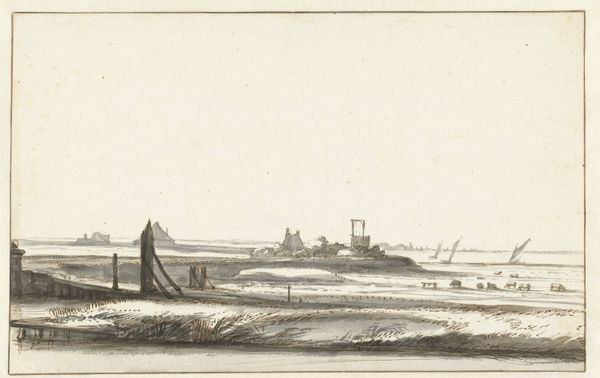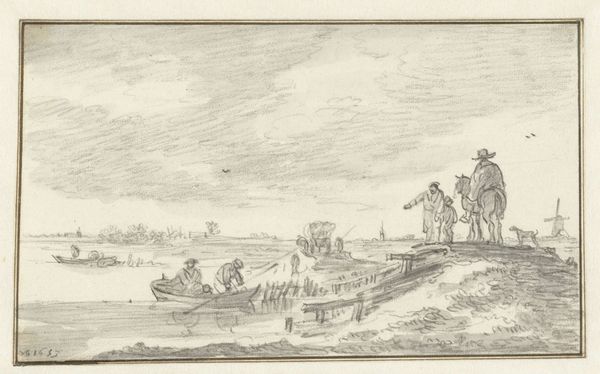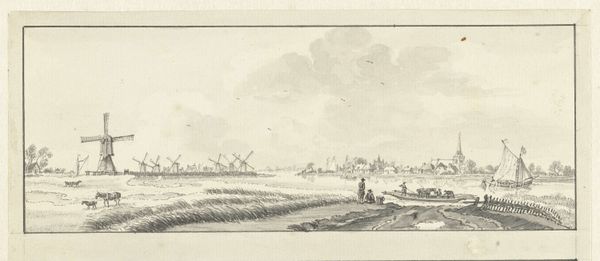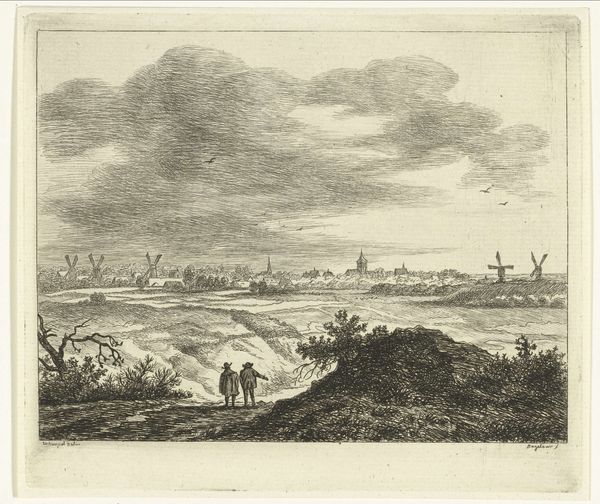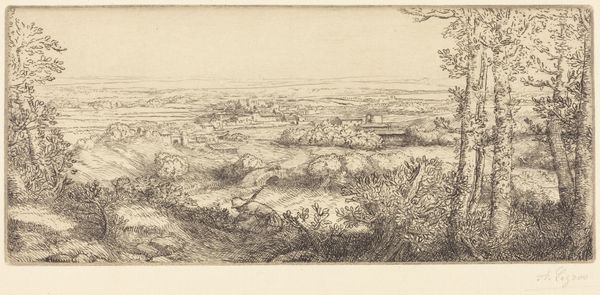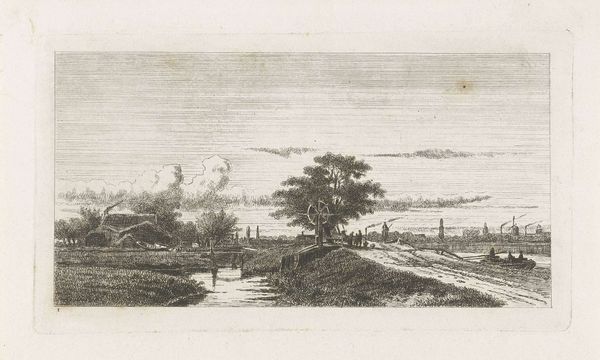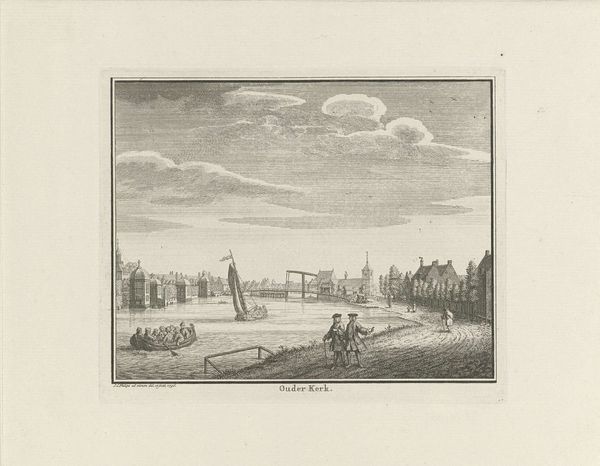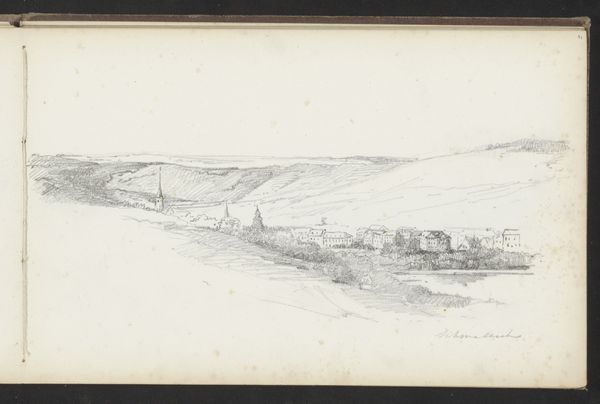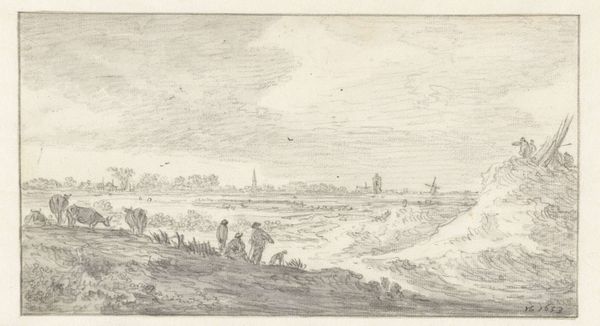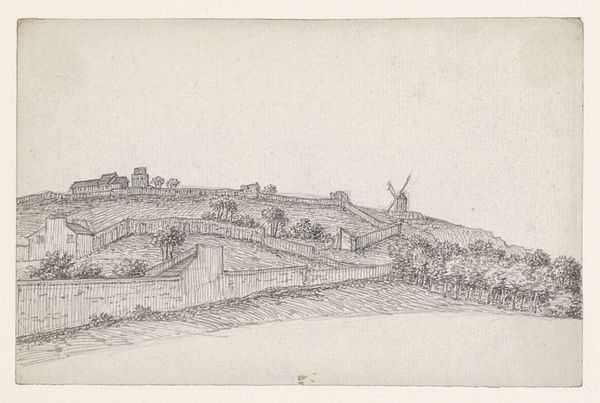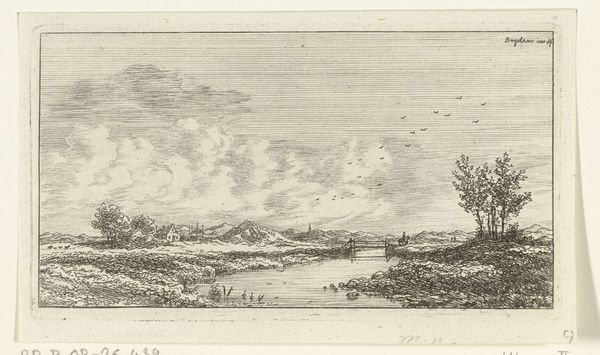
Dimensions: height 88 mm, width 201 mm
Copyright: Rijks Museum: Open Domain
Editor: Here we have Jacobus Ludovicus Cornet’s "Polderlandschap met hooiwagen," from 1851. It's an etching. There's a stark contrast between the sunlit sky and the laborers struggling through the flooded landscape. What story do you think this image is telling? Curator: This work strikes me as a potent visual commentary on the relationship between labor, land, and power during a period of significant socio-economic change. Consider the polder landscape itself: land reclaimed through intensive human effort, only to be perpetually threatened by water. Editor: So, the landscape reflects the laborers’ struggle? Curator: Precisely. The etching medium lends itself to stark contrasts. Note how Cornet uses light and shadow to emphasize the vulnerability and the perseverance of those figures pushing the hay wagon. Where do we position their class within the wider narratives around labour, poverty, and the unequal distribution of resources in 19th-century Netherlands? Editor: I hadn’t thought about that before! Curator: It also makes me think about ecological vulnerability. The land requires ongoing intervention. What does this mean in relation to social progress and the future? Do you see a romanticising element, a 'cultivation of sorrow' towards the working classes, or something else? Editor: It's both beautiful and unsettling. Thinking about it through that lens completely changes my perspective. Curator: Exactly! Art often holds multiple truths simultaneously, doesn't it?
Comments
No comments
Be the first to comment and join the conversation on the ultimate creative platform.
